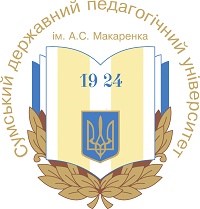ASSESSMENT OF THE GRANULOMETRIC COMPOSITION OF SOILS OF THE STAVCHANKA RIVER VALLEY WITHIN THE BOUNDARIES OF THE CITY OF PUSTOMYTY
DOI:
https://doi.org/10.32782/naturalspu/2025.1.19Keywords:
sod and meadow soils, river valley, granulometric composition, physical clayAbstract
A comprehensive study was conducted using field ('wet' organoleptic) and laboratory (Kachinsky's method) methods of the granulometric composition of soils of the Stavchanka River valley within the city of Pustomyty, Lviv region. The Stavchanka River is a small river that flows in the Lviv region, has a length of 24 km and is the right tributary of the Shchyrka River, which, in turn, flows into the Dniester River.We carried out the study of the granulometric composition only in mineral soils of the river valley, namely in sod and meadow soils on ancient alluvial deposits. In lowland organogenic peatlands, which are also common in the studied area, the study of the granulometric composition was not carried out, since these soils consist of more than 50% of organic material (various degrees of decomposition of organic matter). It was found that the studied mineral soils are characterized by a light loam granulometric composition in the upper horizons (physical clay content 20–30%), however, in the middle part of the profile in meadow soils it is medium loam with a physical clay content of 30–39%, and in the soil-forming rock of both sod and meadow soils the granulometric composition is sandy (physical clay content 16–18%). Among the fractions of granulometric elements, the predominance of the sandy fraction, which consists of well-rolled ancient alluvial deposits, is clearly visible. Its content in the genetic horizons of the studied soils ranges from 30–54%. The silt content is characterized by wide amplitudes of values throughout the profile of sod and meadow soils of the Stavchanka River valley within the city of Pustomyty (from 6 to 29%), and there is an alternation of horizons with a higher and lower silt content along the profile of the studied soils. This confirms the idea that these soils underwent a floodplain phase of soil formation, where there was an annual accumulation of freshly deposited alluvium on the surface of these soils. The obtained research results will be useful to landowners and land users of the research area when conducting scientifically substantiated economic activities on these lands.
References
Горін М. О. Заплавне ґрунтотворення Полісся та лісостепу України (еволюція, біогеохімія, окультурювання) : автореф. дис. … д-ра біол. наук. Харків, 2002. 42 с.
Вовк О., Орлов О. Алювіальні наноси річок Закарпатської низовини і їх роль у заплавному ґрунтоутворенні. Ґенеза, географія та екологія ґрунтів : збірник наук. праць. Львів, 2008. С. 113–120.
Маринич О. М., Шищенко П. Г. Фізична географія України. К. : Т-во «Знання», 2003. 479 с.
Михайлюк В. І. Ґрунти долин річок північно-західного Причорномор’я : екологія, генеза, систематика, властивості, проблеми використання. Одеса : Астропринт, 2001. 340 с.
Наконечний Ю.І, Позняк С.П. Ґрунти заплави ріки Західний Буг. Львів: ЛНУ імені Івана Франка, 2011. 220 с.
Наконечний Ю. І. Практикум з ґрунтознавства і географії ґрунтів. Видавничий Центр. ЛНУ ім. І. Франка, Львів, 2013. 374 с.
Перець Х, Вовк О., Орлов О., Луцишин О. Властивості алювіальних наносів річок Верхньодністерської алювіальної рівнини. Вісник Львівського університету. Серія географічна. 2017. Вип. 51. С. 293–303.







